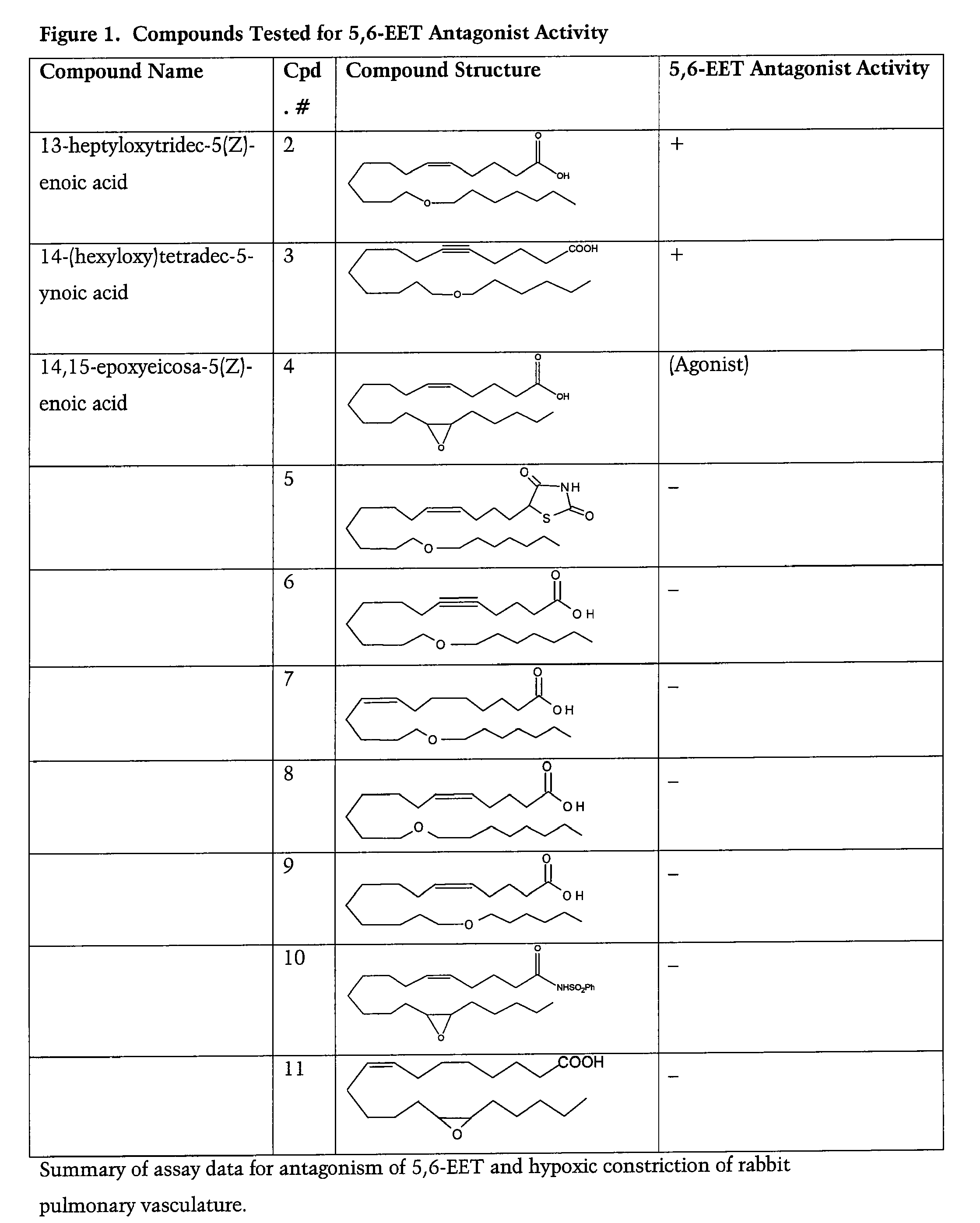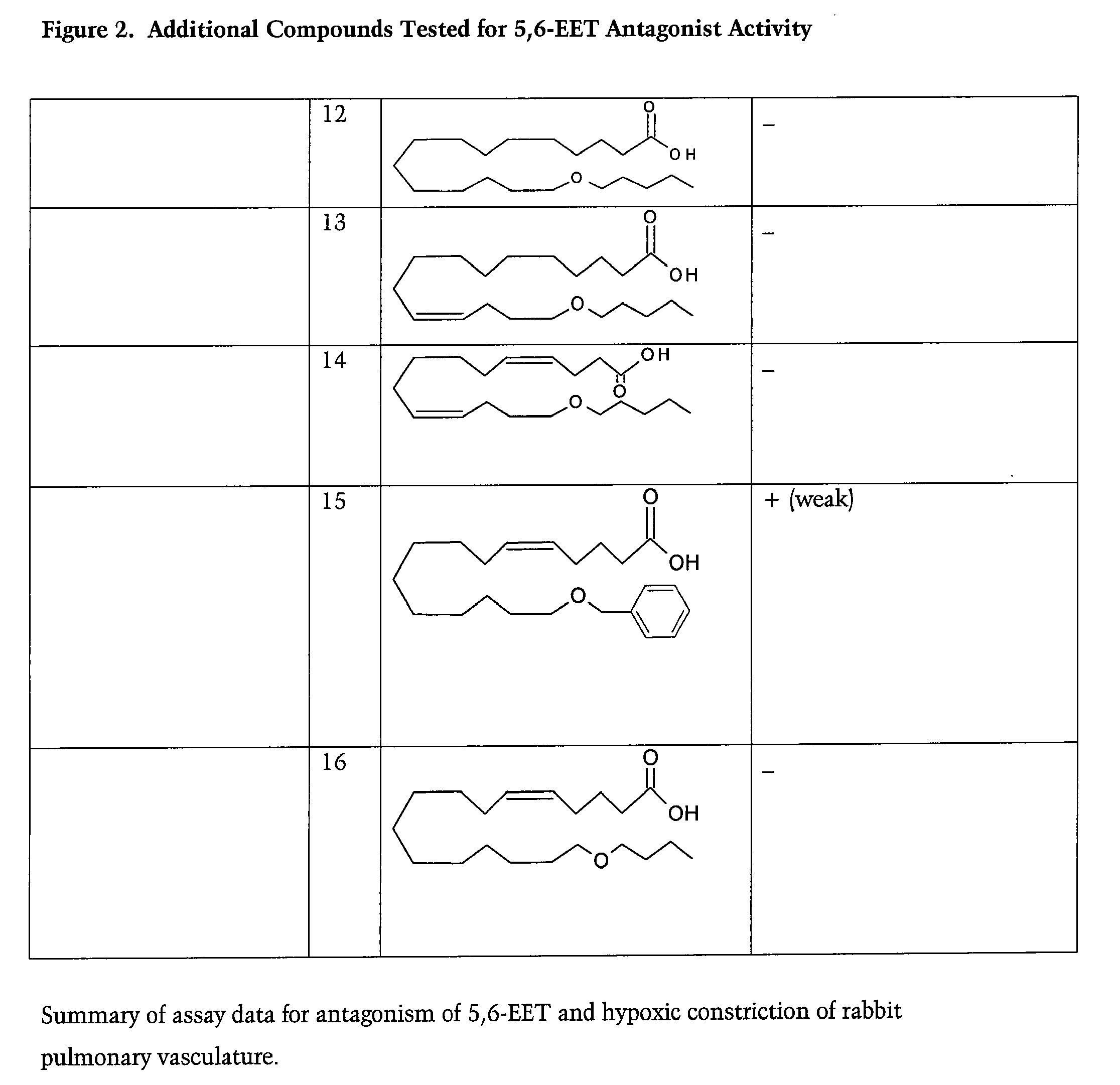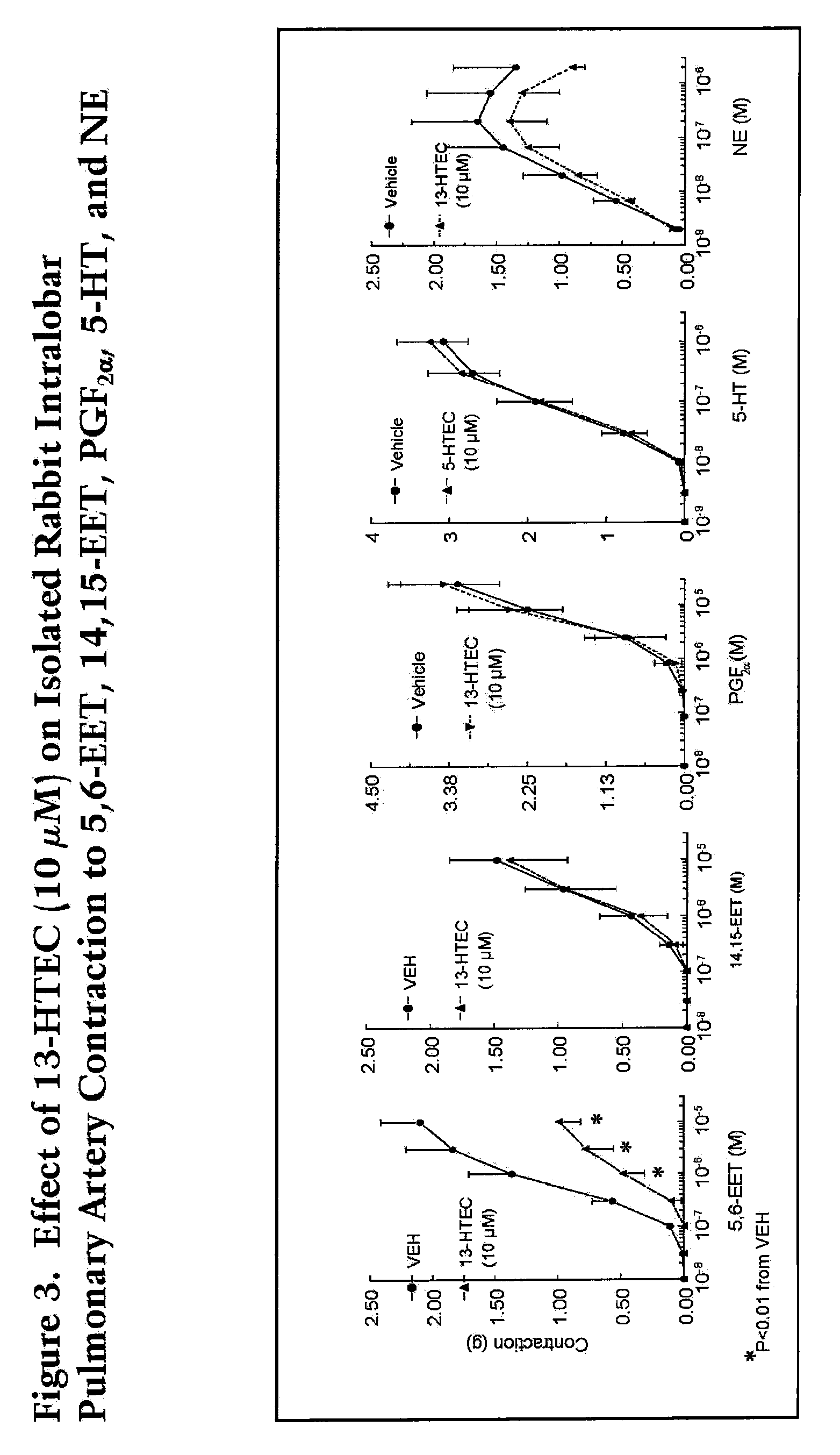Modulators of Pulmonary Hypertension
a technology of pulmonary hypertension and modulators, which is applied in the direction of biocide, drug composition, peptide/protein ingredients, etc., can solve the problems of inconvenient long-term iloprost therapy, life-threatening condition of pulmonary hypertension, and heart failure and death
- Summary
- Abstract
- Description
- Claims
- Application Information
AI Technical Summary
Benefits of technology
Problems solved by technology
Method used
Image
Examples
example 1
[0069] To prepare 5,6-EET, selective epoxidation of arachidonic acid was achieved using the method of Corey (Corey E. J., et al. J Am Chem Soc 101: 1586-1587, 1979) as described previously (Stephenson A. H., et al., Am J Physiol 275: H100-H109, 1998). In its free-acid form, 5,6-EET readily decomposes to 5,6-dihydroxyeicosatrienoic acid (DHET) and the corresponding δ-lactone. Therefore, before use, 5,6-EET was re-purified by reverse-phase HPLC. The structure of 5,6-EET is as shown below:
[0070] To prepare 14,15-epoxyeicosa-5(Z)-enoic acid (14,15-EEZE) the procedures described in Falck J. R., et al., Am J. Physiol. 2003; 284: H337-H349 can be employed.
[0071] To prepare methylsulfonimide derivatives of compounds of the invention, procedures described in Falck J. R., et al., Am J Physiol. 2003; 284: H337-H349 to synthesize the methylsulfonimide derivative of 14,15-EEZE can be employed to synthesize similar methylsulfonimide derivatives of the compounds of the invention. In brief, the ...
example 2
[0072] The ability of the exemplary compounds 13-heptyloxytridec-5(Z)-enoic acid (13-HTEC) and 14-(hexyloxy)tetradec-5-ynoic acid (14-HTYC) to specifically inhibit 5,6-EET induced vasoconstriction of pulmonary arteries was demonstrated in rabbit intralobar pulmonary arteries. To obtain the pulmonary arteries used in the study, adult New Zealand white rabbits (2.4-3.0 kg) were anesthetized with pentobarbital sodium (15 mg / kg iv) for 10 minutes after intramuscular administration of ketamine (8 mg / kg) and xylazine (2 mg / kg). A tracheostomy was performed and a tracheal cannula was inserted. The animals were ventilated via a fixed volume ventilator (Harvard) with room air (tidal volume: 8-10 ml / kg at 15 cycles / min). A catheter was inserted into a carotid artery for administration of heparin (1,000 units, iv) 10 minutes before exsanguination of the animal. After exsanguination, the lungs were removed for isolation of the pulmonary vessels. Intralobar, second order pulmonary arteries (PA) ...
example 3
[0074] The ability of the exemplary compound 13-heptyloxytridec-5(Z)-enoic acid (13-HTEC) to specifically inhibit hypoxia-induced pulmonary vasoconstriction was also demonstrated in isolated perfused rabbit lungs. Adult New Zealand white rabbits were prepared as described in Example 2. After exsanguination was completed, a midsternal thoracotomy was performed, and the heart and lungs were removed en bloc. Fluid-filled catheters were placed into the PA and the left atrium for lung perfusion and pressure measurements. The isolated lungs were ventilated at 10 ml / kg with 26-30 breaths / min of 15% O2-6% CO2-79% N2 to achieve a perfusate pH of 7.33±0.01, PCO2 of 38.1±2.8 mmHg, and PO2 of 107.3±5.9 mmHg. The lungs were perfused in a humidified chamber (34-37° C.) in a recirculating manner with 150 ml of PSS containing (in mM) 118.3 NaCl, 4.7 KCl, 2.5 CaCl2, 1.2 MgSO4, 1.2 KH2PO4, 25.0 NaHCO3, 0.026 Na-EDTA, and 11.1 glucose (pH 7.4) to which hetastarch was added for maintenance of oncotic p...
PUM
| Property | Measurement | Unit |
|---|---|---|
| Altitude | aaaaa | aaaaa |
| Structure | aaaaa | aaaaa |
Abstract
Description
Claims
Application Information
 Login to View More
Login to View More - R&D
- Intellectual Property
- Life Sciences
- Materials
- Tech Scout
- Unparalleled Data Quality
- Higher Quality Content
- 60% Fewer Hallucinations
Browse by: Latest US Patents, China's latest patents, Technical Efficacy Thesaurus, Application Domain, Technology Topic, Popular Technical Reports.
© 2025 PatSnap. All rights reserved.Legal|Privacy policy|Modern Slavery Act Transparency Statement|Sitemap|About US| Contact US: help@patsnap.com



